Acoustic neuromas are benign tumours of the Schwann cells surrounding the auditory nerve (vestibulocochlear nerve) that innervates the inner ear.
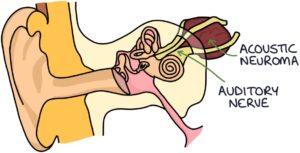
They are also called vestibular schwannomas, as they originate from the Schwann cells. Schwann cells are found in the peripheral nervous system and provide the myelin sheath around neurones.
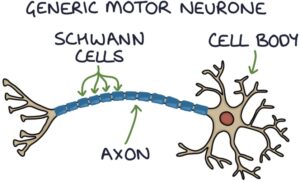
They occur at the cerebellopontine angle and are sometimes referred to as cerebellopontine angle tumours.
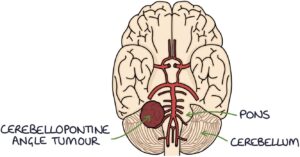
Acoustic neuromas are usually unilateral. Bilateral acoustic neuromas are associated with neurofibromatosis type II.
TOM TIP: Bilateral acoustic neuromas almost certainly indicate neurofibromatosis type II. This is a popular association in exams, so worth remembering.
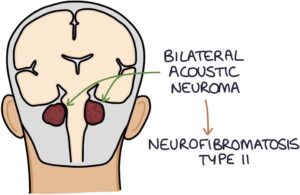
Presentation
The typical patient is aged 40-60 years presenting with a gradual onset of:
- Unilateral sensorineural hearing loss (often the first symptom)
- Unilateral tinnitus
- Dizziness or imbalance
- A sensation of fullness in the ear
They can also be associated with a facial nerve palsy if the tumour grows large enough to compress the facial nerve.
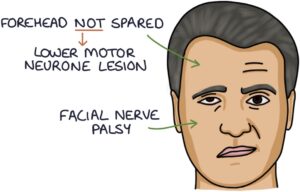
Investigations
Audiometry is used to assess hearing loss. There will be a sensorineural pattern of hearing loss.
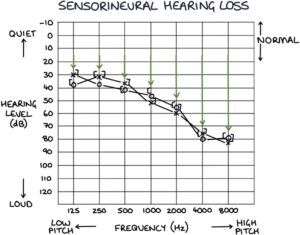
Brain imaging (MRI or CT) is used to establish the diagnosis and features of the tumour. MRI provides more detail than CT.
Management
ENT specialist management options include:
- Conservative management with monitoring may be used if there are no symptoms or treatment is inappropriate
- Surgery to remove the tumour (partial or total removal)
- Radiotherapy to reduce the growth
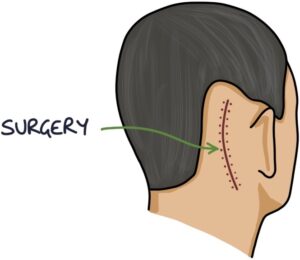
Notable risks associated with treatment are:
- Vestibulocochlear nerve injury, with permanent hearing loss or dizziness
- Facial nerve injury, with facial weakness
Last updated July 2021
